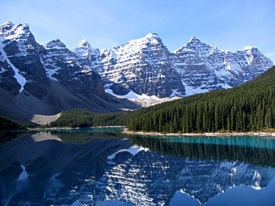By Sally MacDonald
The Rocky Mountains have lost 20 per cent of their snow cover since the 1980s, according to a U.S. geological study.
The study by scientists at the U.S. Geological Survey found "unusually severe declines in snow pack in the northern Rocky Mountains" since the 1980s.
Earlier research had found that before the 1980s, snow pack was low in the southern Rockies when it was high in the northern Rockies, and vice versa. This new study found that the decline now applies to the entire length of the mountain range.
"Each year we looked at temperature and precipitation variations and the amount of water contained within the snow pack as of April," said scientist Greg Pederson, the lead author of the study. "Snow deficits were consistent throughout the Rockies due to the lack of precipitation during the cool seasons during the 1930s — coinciding with the Dust Bowl era. From 1980 on, warmer spring temperatures melted snow pack throughout the Rockies early, regardless of winter precipitation. The model in turn shows temperature as the major driving factor in snow pack declines over the past 30 years."
To conduct the study, geological scientists measured the amount of snow against monthly temperature and precipitation data, going all the way back to 1895 and running the figures all the way to 2011.
That gave the scientists a look at how winter temperature, spring temperature and precipitation has affected the snow pack.
Geologists found that regional snow pack accumulation is very sensitive to changes in those two factors — temperature and precipitation — over time.
However, it is hard to see why the snow pack has declined so rapidly in the past 30 years. Patterns are hard to discern when analyzing variation of temperature and precipitation because La Nina and El Nino affect the northern Rockies differently than the southern and central Rockies.
Recent changes to the snow pack in the mountain range were compared to evidence from tree rings going back 800 years.
Greg McCabe, co-author of the study, explains that “recent springtime warming also reduced the extent of snow cover at low to middle elevations where temperature has had the greatest impact.”
“Both natural variability in temperature and anthropogenic warming have contributed to the recent snow pack decline, though disentangling their influences exactly remains elusive,” said Julio Betancourt, a fellow researcher at the U.S. Geological Survey.
Snow pack on the Rockies is important for both the U.S. and Canada because it affects things like crop irrigation, energy production at hydroelectric dams, as well as the risk of flood and wildfire.
According to the study, if snow melt happens earlier and faster, it can have repercussions for water supply, risk management and ecosystem health for communities west of the Rocky Mountains.
